When reflecting upon his travels to the French capital, Thomas Jefferson once said, “A walk about Paris will provide lessons in history, beauty, and in the point of Life.” It has been several centuries since he set foot in Paris, but the city’s splendor has not diminished; it remains a financial and cultural capital not only of France but of the world. To get to know the city fabled for its sophistication, romance, and light, we’ve assembled a list of the top 10 must-sees to visit during your stay in Paris.
1. The Eiffel Tower
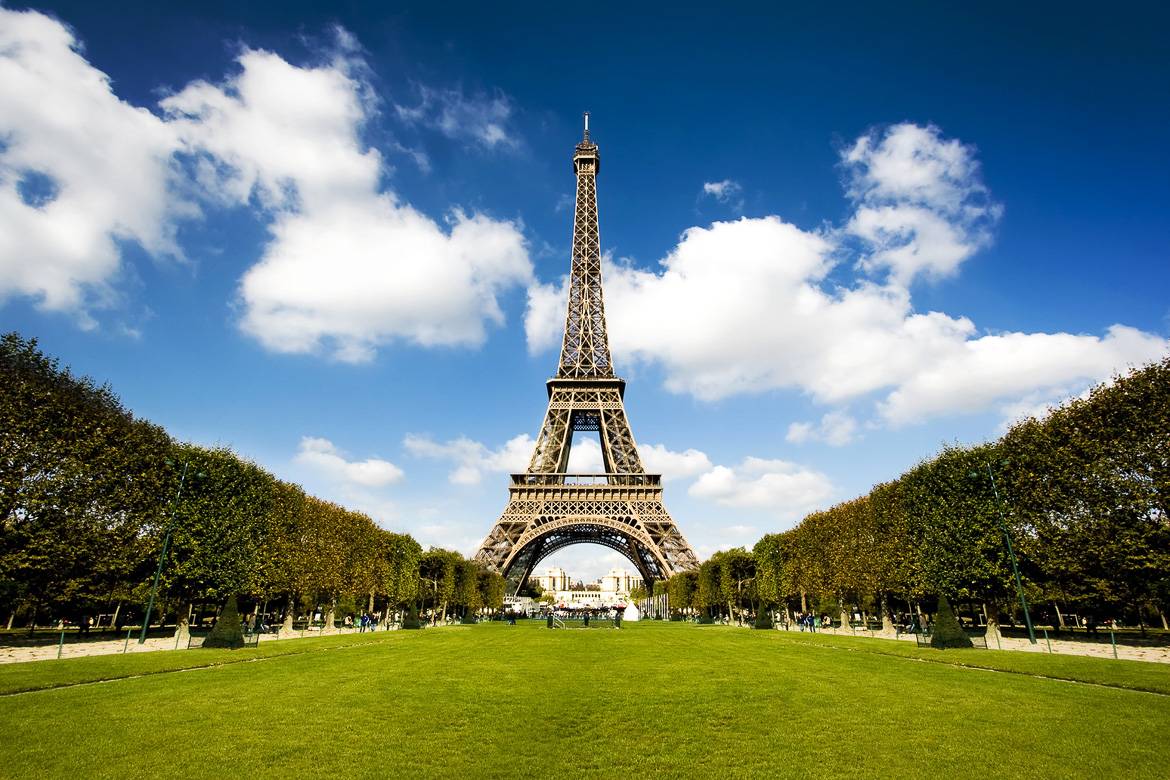
Like Big Ben in London and the Statue of Liberty in New York, the Eiffel Tower is Paris’s most identifiable landmark, and has the numbers to prove it: 7 million visitors per year. Named for the engineer who built it (Gustave Eiffel), the Tower was constructed to welcome guests to the 1889 World’s Fair. At the time of its construction, it was the tallest man-made structure in the world! Many Parisians initially considered the monument to be an eyesore. In fact, the Tower was almost dismantled in 1909, but was saved because of its value to transmit radio signals. Today, the Eiffel Tower is regarded as an architectural marvel and is the most-frequented paid monument in the world.
There are three levels open to the public, the highest of which stands at a height of 276 meters (905 feet). Each level can be accessed by an elevator or stairs (the latter is not for the faint of heart). On the first floor, you’ll find a cinema devoted to the Tower’s history, a souvenir shop, and the 58 Tour Eiffel restaurant. The second level is home to the Jules Verne restaurant, where you can sample French cuisine with a spectacular view of the city. At the top level, walk through a recreation of Eiffel’s office before making a toast at the champagne bar. No matter how high you travel, the Tower will provide stunning views of Paris laid out before you. The monument stands on the lawn of the Champ de Mars, which is located in Paris’s 7th Arrondissement. Check out our guide to the 7th Arrondissement of Paris for more details.
The site is easily accessed via the Métro and RER. As of July 2019, ticket prices to the top floor range from €25.50 for adults to €6.40 for children and disabled individuals (tickets that access the first and second floors are cheaper). If you want to dine at one of the two restaurants, you’ll need to make a reservation. The Tower is open 365 days a year from 9:00 a.m. until 12:45 a.m. in the summer months and 9:30 a.m. to 11:45 p.m. during the rest of the year. More information can be found in our Eiffel Tower visitor’s guide.
2. The Cathédrale Notre Dame de Paris
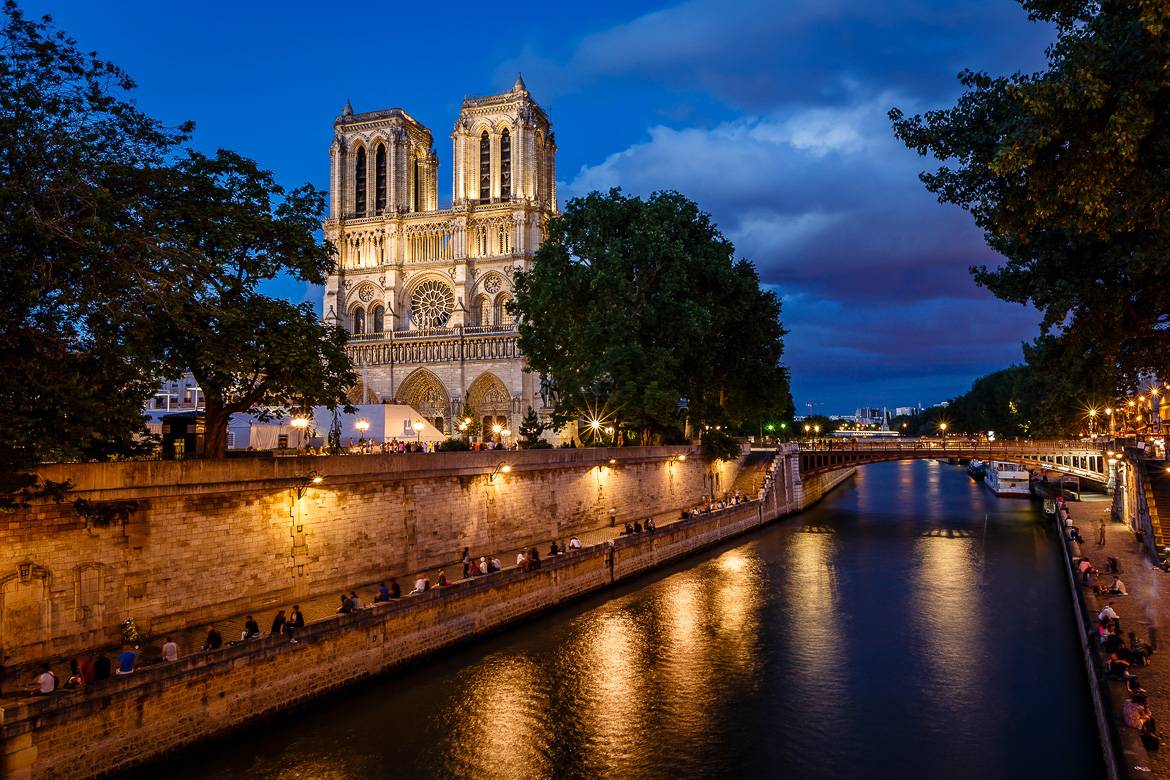
Notre Dame de Paris is one of the most famous churches in the world. Bishop Maurice de Sully of Paris began the process of constructing the cathedral in 1160, though the first stone was not laid until 1163. The entire project took nearly 200 years to complete, and has survived the French Revolution and multiple restorations. Notre Dame is in the 4th Arrondissement in the center of the city, overlooking the Seine from the eastern end of the Île de la Cité, with Métro and RER stations not far from the site.
The church is free to visit, though admission is charged for cathedral tower tours and visits to the Treasury. Tours are available in multiple languages and if you miss a tour, audio guides are also available. The cathedral is a working church, so feel free to attend the daily Catholic Mass if you wish. Notre Dame’s bell towers and gargoyles have inspired artists throughout the centuries. Experience the history yourself with a visit!
Note from July 2019: Following the fire of April 2019, Notre Dame de Paris is closed to all visits for restoration. Check online for the latest about tour availability and hours.
3. Arc de Triomphe
The Arc de Triomphe stands where the Avenue Champs-Élysées meets the center of the Place Charles de Gaulle traffic circle. The Arc is a memorial in honor of the French soldiers lost in the Napoleonic and French Revolutionary Wars, and its intricate neoclassical structure is perhaps the most recognized in Paris aside from the Eiffel Tower.
Between April and September, visiting hours are from 10:00 a.m. to 11:00 p.m. The Arc slightly limits its hours from October through March, (10:00 a.m. to 10:30 p.m.). The monument is open every day except New Year’s Day, May 1, Christmas Day, and the morning hours of May 8, July 14, and November 11. Line A of the RER and lines 1, 2, and 6 of the Métro will take you close to the 16th Arrondissement site, and you can explore it as a pedestrian or drive by as a passenger in the traffic junction!
4. Sacré-Coeur Basilica
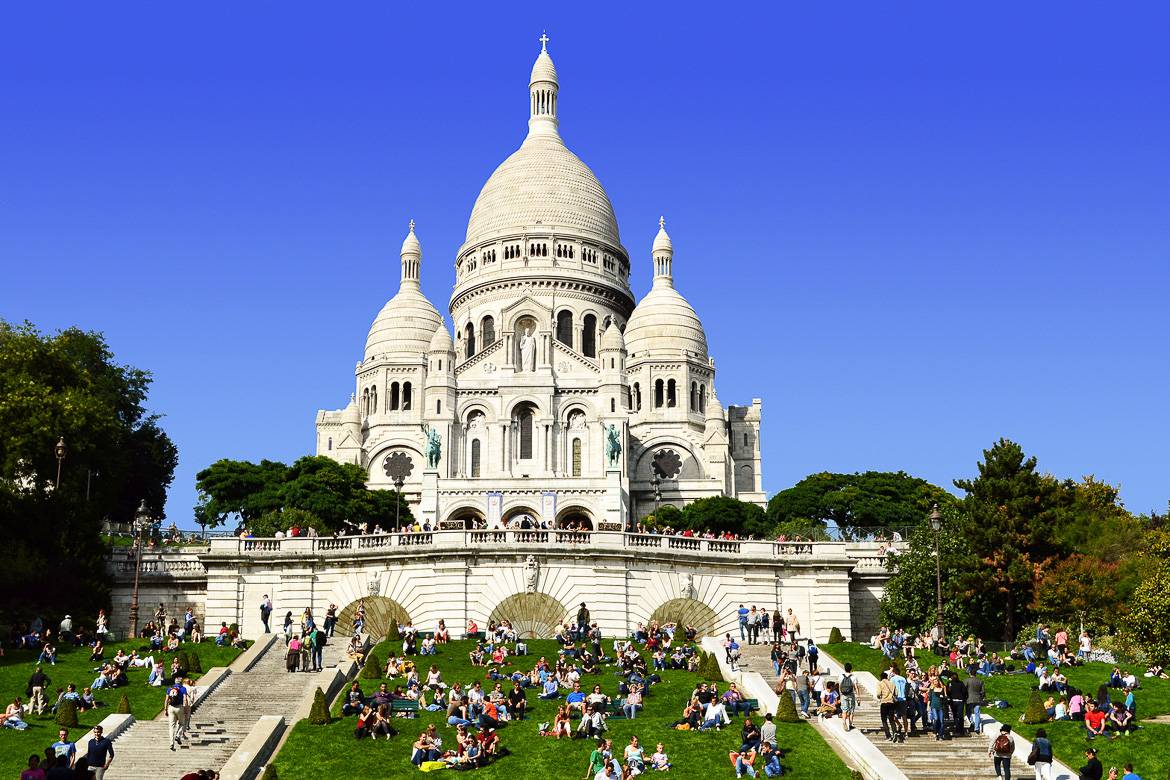
You might feel inspired to say a prayer when you witness the most underrated view of Paris. The Sacré-Coeur Basilica sits at the peak of the highest non-manmade point in the city, the hill Montmartre. This Catholic church is a popular destination for its stunning panoramas of Paris, its religious services, and its striking architecture. Construction began in 1875 as a message of French spiritual repentance following defeat by the Prussians. It was completed in 1914, though the church’s consecration was postponed until the end of World War I. The Sacré-Coeur stands out from other Parisian churches due to its Romano-Byzantine architecture and its white stone façade. Be sure to make the 300-step climb to the basilica’s dome for a view of the city that’s unlike any other.
The Sacré Coeur is open daily from 6:00 a.m. to 10:30 p.m. and is free to enter. Take the 2 or 12 Métro lines to arrive at the church in the 18th Arrondissement. While you’re here, take advantage of the surrounding Montmartre neighborhood, known for its nightlife and the Moulin Rouge cabaret. Here’s some extra information about the legendary neighborhood of Montmartre.
5. Musée du Louvre (Louvre Museum)
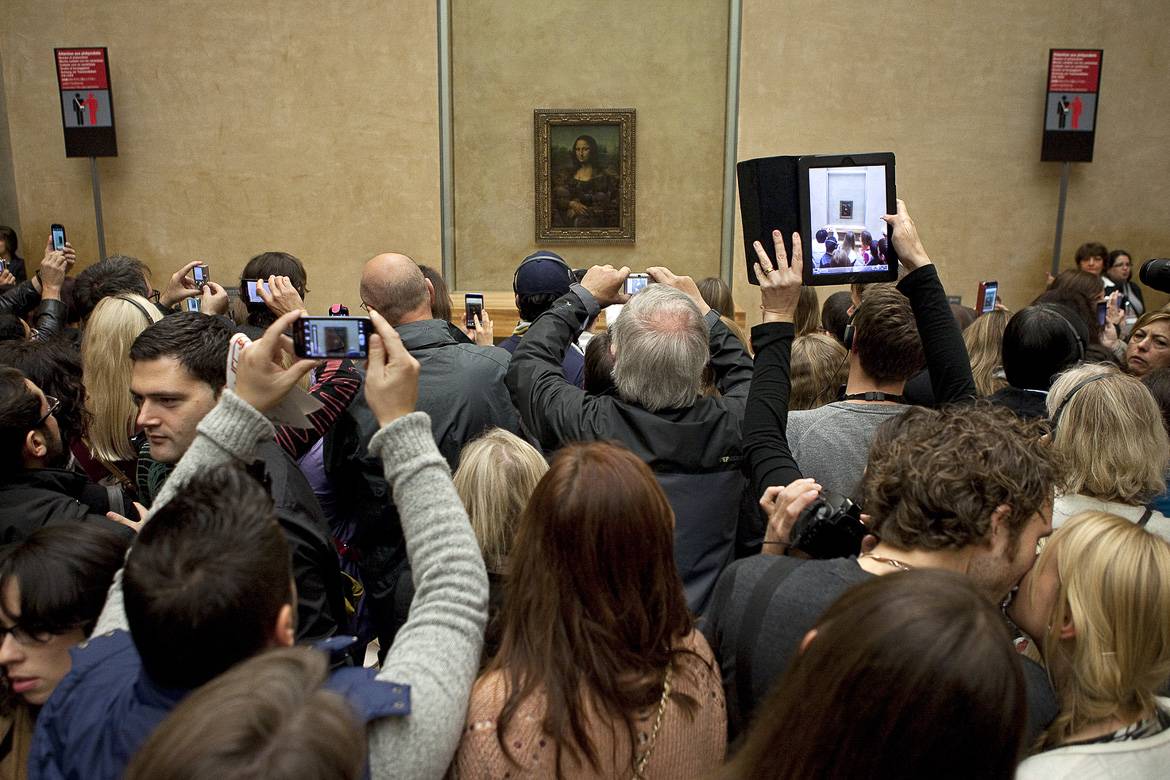
Arguably the most famous art museum in the world, the Louvre houses thousands of works of art, including Leonardo Da Vinci’s Mona Lisa. The building underwent centuries of transformation, from a 12th-century fortress, to a royal palace, to a Napoleonic conquest. In 1793, it opened as a museum to display art from around the world, and has been a gallery ever since (though it has gotten a few aesthetic facelifts!). Browse exhibits of Egyptian, Near Eastern, Greek-Etruscan-Roman, and Islamic art, as well as sculpture halls, paintings, and decorative pieces like tapestries, jewelry, and ceramics. And while the Mona Lisa may be your main motivation for visiting, don’t neglect the other masterpieces the museum houses.
The Louvre is open every day except Tuesday from 9:00 a.m. to 6:00 p.m. Wednesdays and Fridays have extended hours until 9:45 p.m. The museum closes its doors on January 1st, May 1st, and Christmas Day. As of July 2019, tickets to the museum cost €17, though free admission is sometimes available for special events.
6. Centre Georges Pompidou
If you’re in the market for a more contemporary cultural experience, look no further than the Centre Georges Pompidou in the 4th Arrondissement. The complex opened in 1977 and is comparable to Lincoln Center in New York; the home of a public library, the Museé National d’Art Moderne, and what the Pompidou calls a “center for musical creation.” Admire the innovative architecture, a blend of glass and pipe-like structures that give the appearance of a building turned inside out, before exploring the interior attractions.
Tickets for adults range from €11 to €14, and like at the Louvre, some guests are eligible for free or discounted rates. The complex is open from 11:00 a.m. until 10:00 p.m., but is closed on Tuesdays and May 1st. Take the Métro or RER to Les Halles to visit.
Prices accurate as of July 2019.
7. Musée d’Orsay
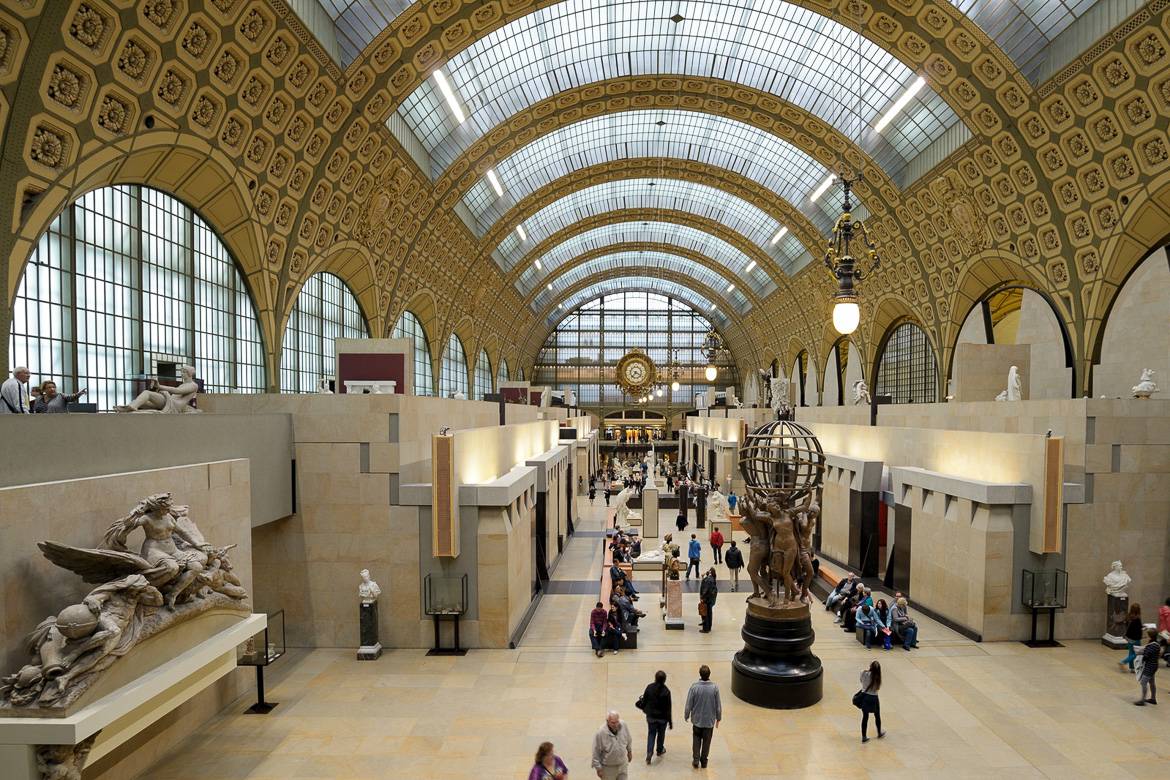
This 7th Arrondissement museum might have the most unusual history of any in Paris. The building was originally the central train station for the railroad network, was later a mailing facility for World War II prisoners of war and the location for a number of film shoots, and then became the Museé d’Orsay in 1986. Most of the museum’s displays are mid-19th to early-20th-century French art, with works by some of history’s most illustrious painters like Degas, Manet, Monet, and Van Gogh.
Hours are from 9:30 a.m. to 6:00 p.m., with closings on Mondays and certain holidays. As of July 2019, adult tickets cost €14, with reduced rates for certain visitors. Line 12 on the Métro and line C on the RER will bring you to the museum, though if you had been a Parisian flâneur in 1900, you could have taken a train directly into the museum!
8. Opéra National de Paris (Palais Garnier)
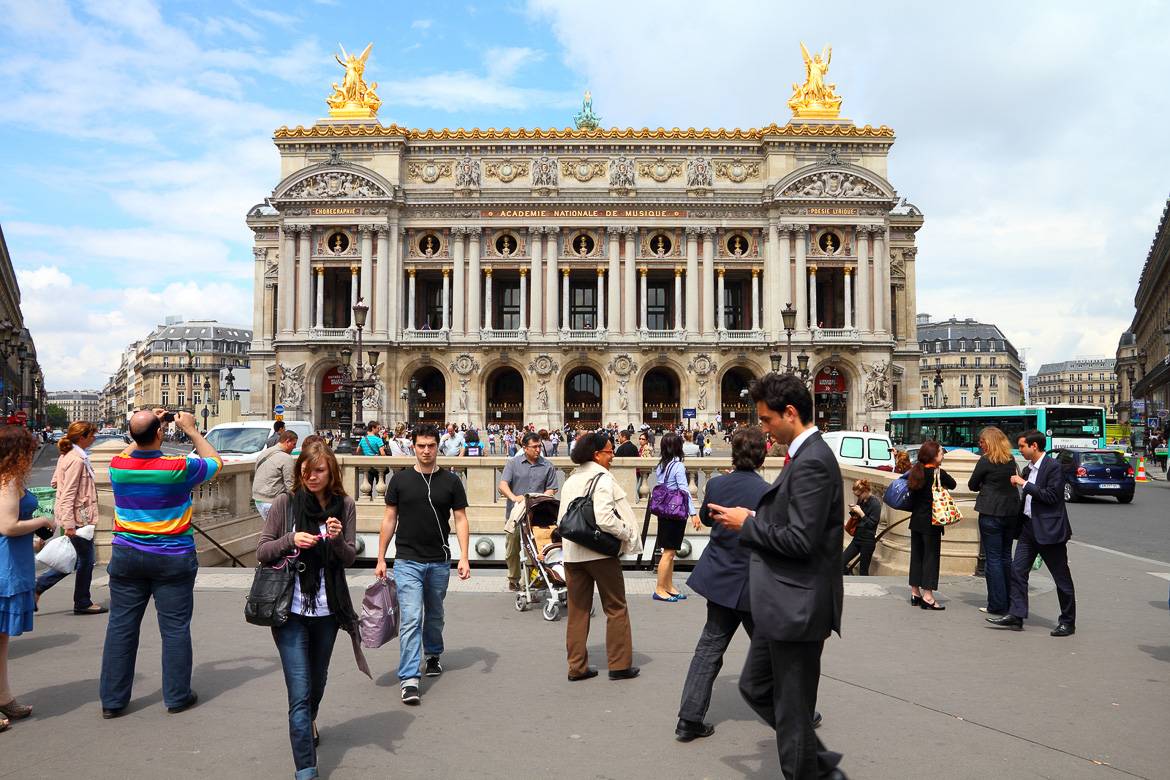
The Palais Garnier will take your breath away with its old-world glamour and Beaux-Arts opulence. Alongside the modern Opéra Bastille, the Opéra Garnier is part of the Opéra National de Paris and was completed in 1875 after 14 years of construction. Before the Bastille’s opened, it was Paris’s main opera house. Nowadays, it hosts a majority of the Opéra National’s ballet productions. The Opéra Garnier also displays exhibitions at the Bibliothèque-Musée de l’Opéra de Paris. Marvel at the intricate interiors, the symmetrical staircases, and the ornate chandelier that inspired The Phantom of the Opera.
Tickets for live performances vary in price. Tours of the Opéra Garnier’s beautiful interior are €17 (as of July 2019) and are available between 11:00 a.m. and 3:30 p.m. The Opéra Garnier closes on January 1st and May 1st. The opera house is located in the 9th Arrondissement.
9. Avenue Champs-Élysées
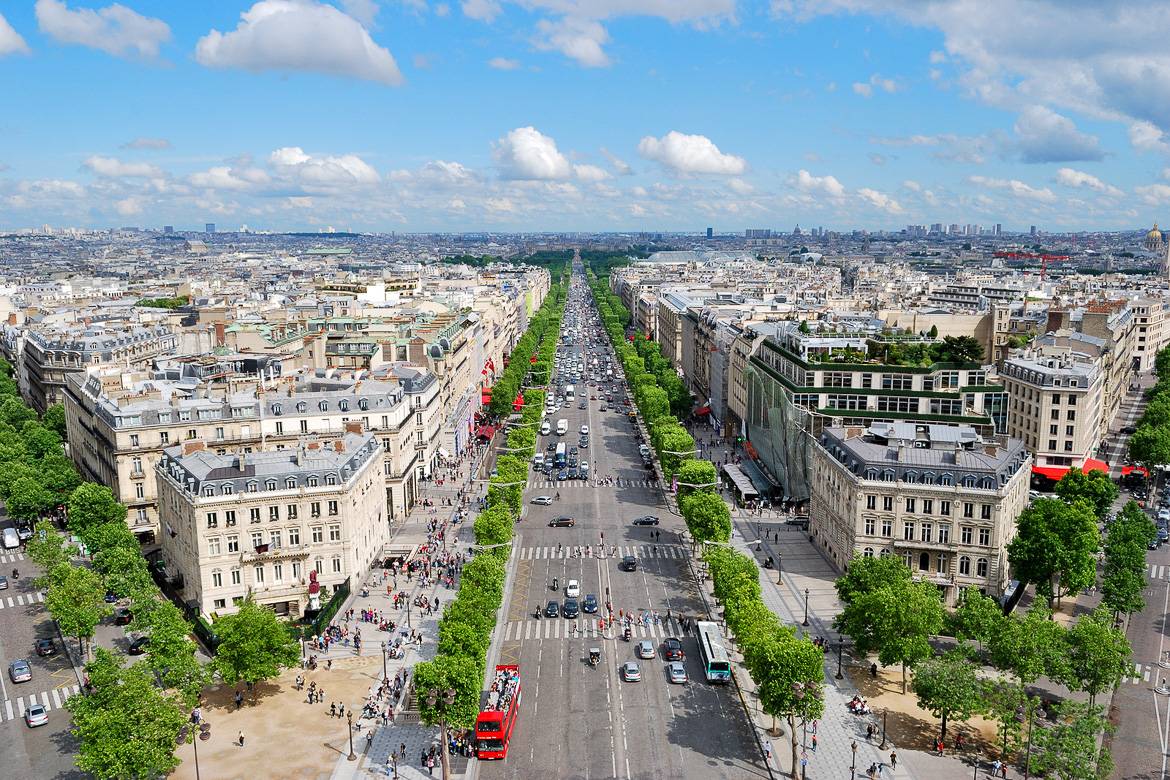
The Champs-Élysées is the most famous avenue in Paris, stretching all the way to the Arc de Triomphe in the 8th Arrondissement. Lined by trees and a number of shops, designer boutiques, and eateries, the avenue is a popular walkway for Parisians and tourists alike. Be aware that the Champs-Élysées’s prime location drives up the prices of shops and restaurants along the avenue. Considering that the avenue originated as an extension of the Tuileries Garden, you should pay the park (a hub for people-watching and leisure for centuries) a visit as well. Read our complete guide to the Champs-Élysées for more information.
10. Château de Versailles (Palace of Versailles)
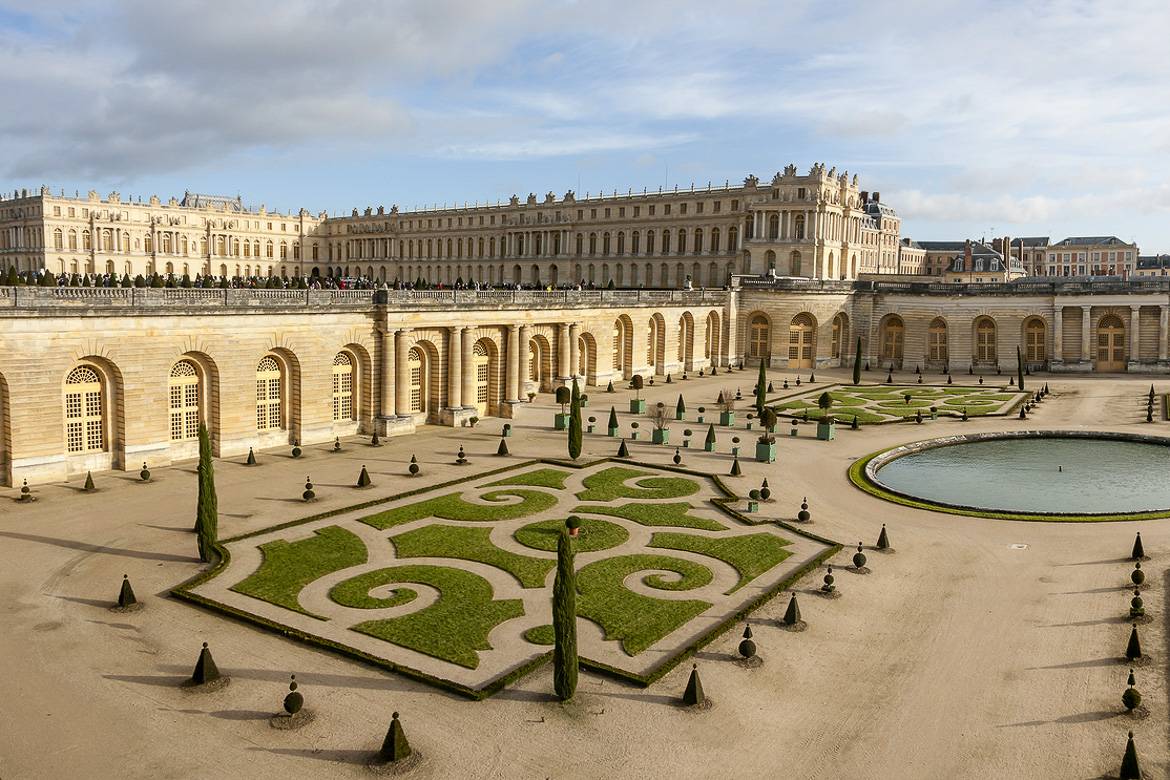
Although it’s technically outside city limits, the Château de Versailles is too spectacular to miss. French kings lived here from the 1670s to 1789, the fall of the monarchy during the French Revolution. Versailles is now part of the affluent Parisian suburbs and serves as a museum that preserves the lavish style of the monarchy and is a testament to French history.
Wander through the world-famous Hall of Mirrors, where sparkling chandeliers hang from elaborately painted ceilings and reflect around the hall. Take a walk through the immaculately landscaped gardens or the quiet grandeur of Marie Antoinette’s estate.
To see all of Versailles, purchase a passport ticket for €20 (price as of July 2019). Outdoor areas are open daily, while the palace’s interior is closed on Mondays. The Versailles Express bus transports guests from the Eiffel Tower to the estate, or you can take the RER Line C. To find out more, read our Palace of Versailles visitor’s guide.
If you’re looking to rent in Paris, let us be your guide with a stay in one of our vacation rentals in the City of Lights. If you’d like to stay for one month or more, check out our furnished rentals located throughout Paris.
Have you ever visited Paris? Which of these spots appeals to you the most?

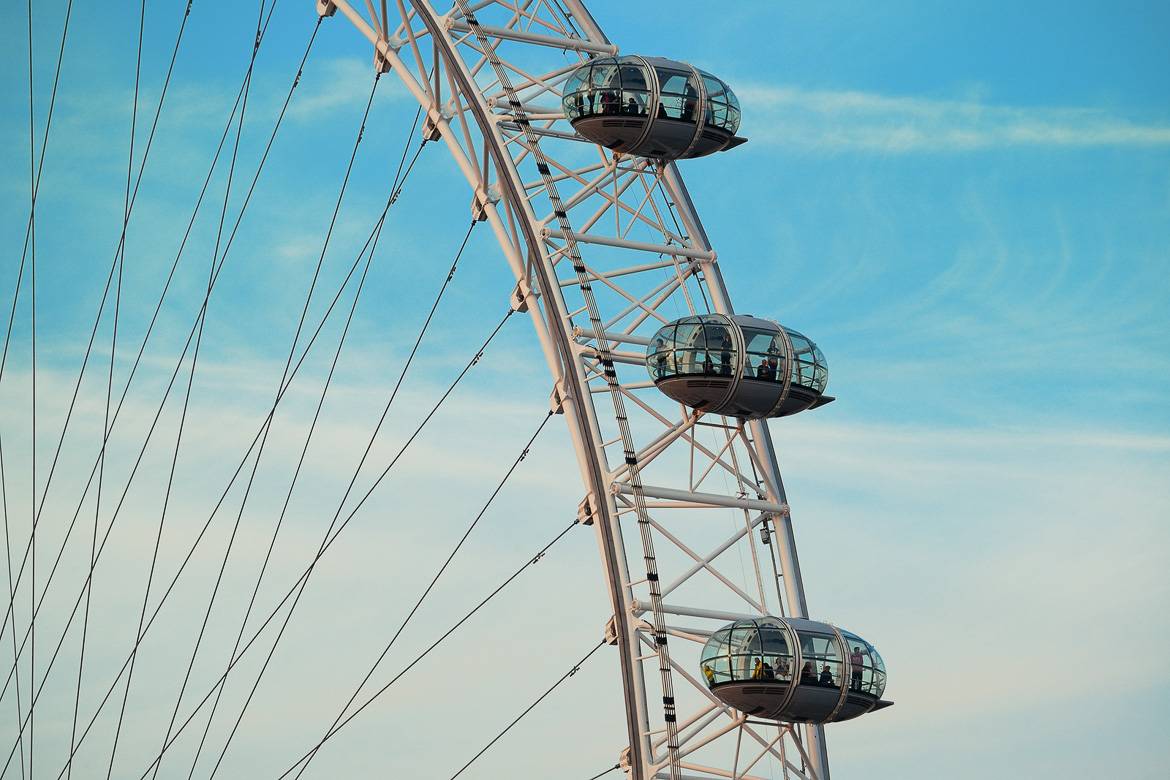
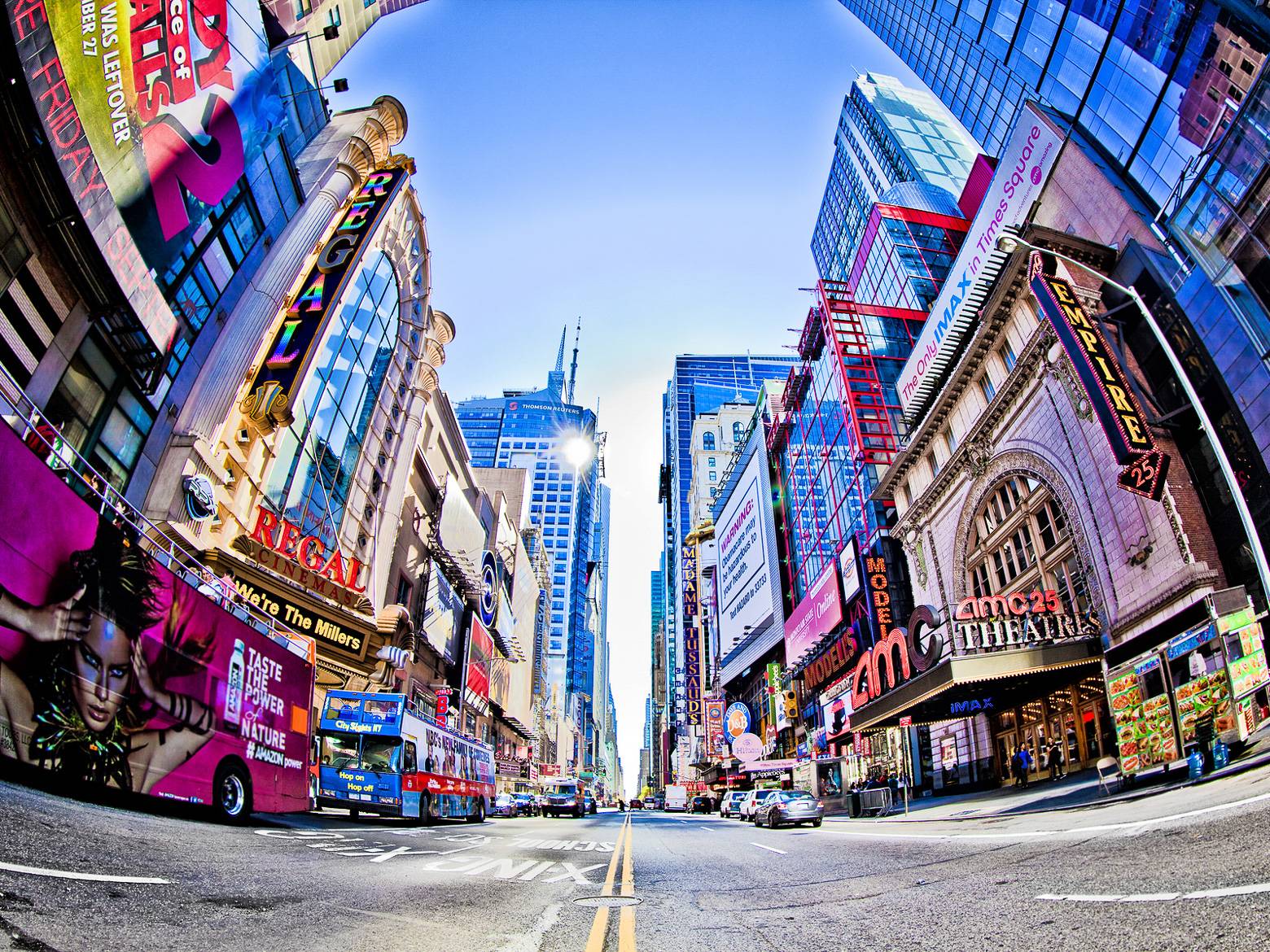
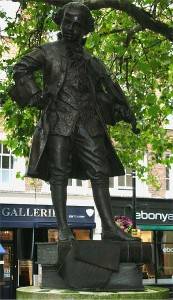
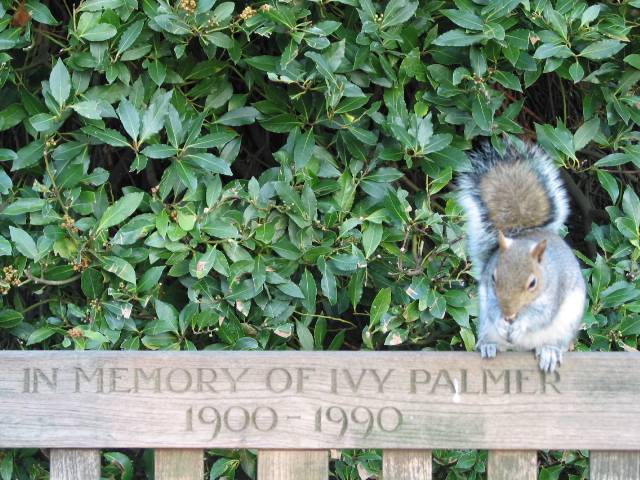
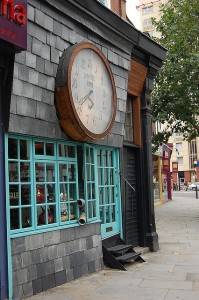
Leave a Reply